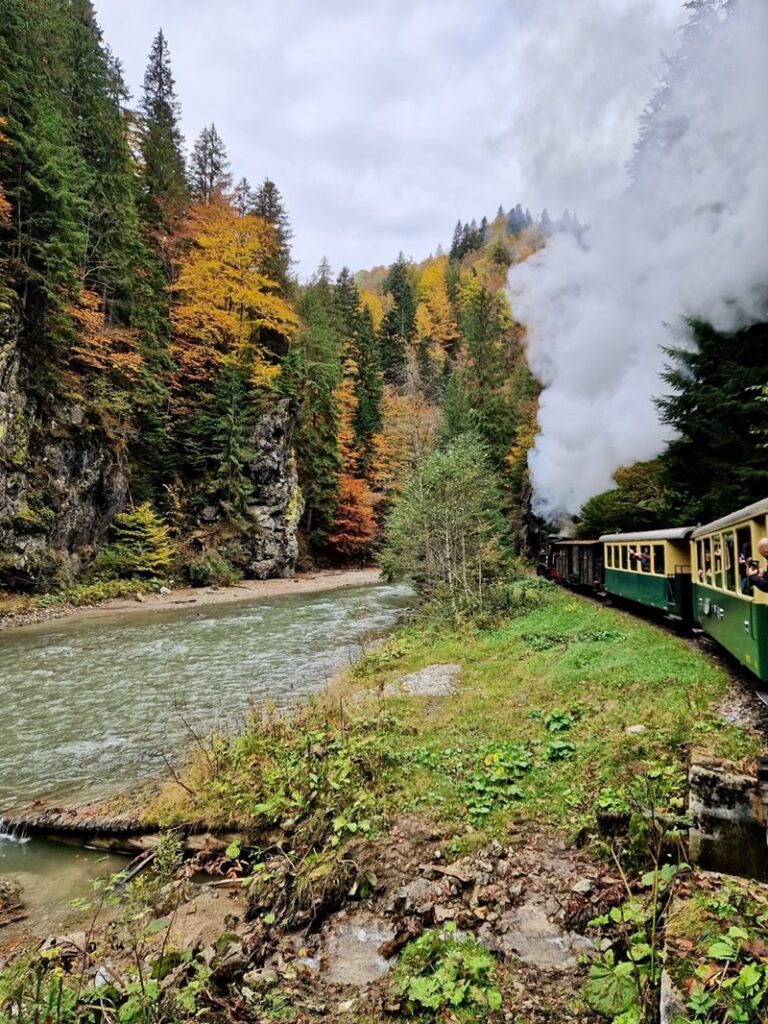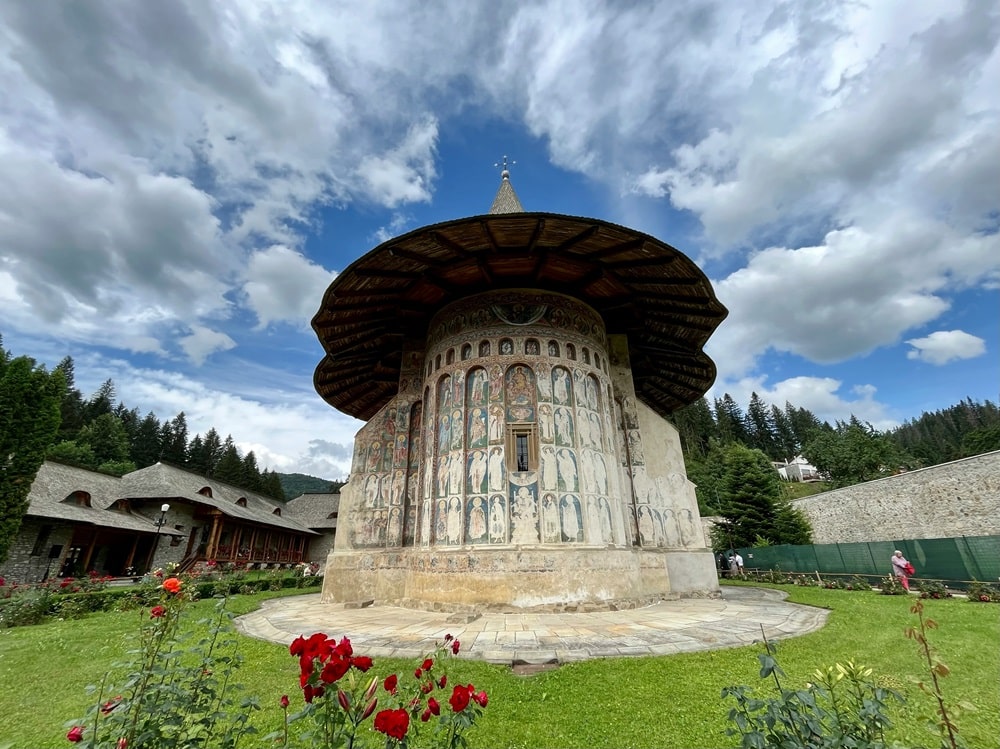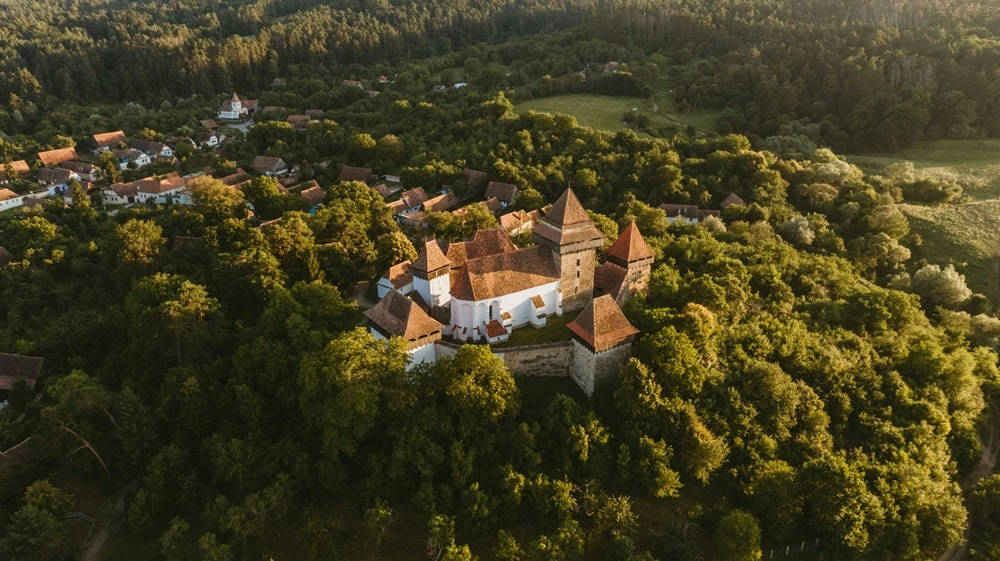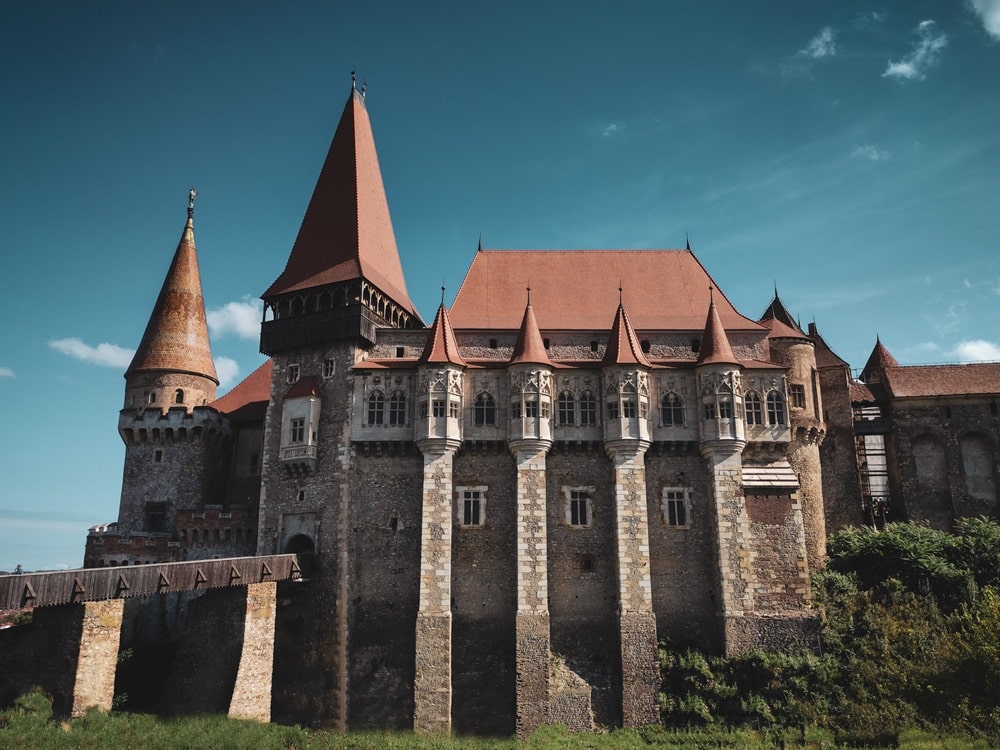Table of Contents
- Is Romania Worth Visiting?
- Is Romania friendly to tourists?
- Is Romania cheap or expensive?
- What is the best time to go to Romania?
- What you need to know before traveling to Romania?
- What foods do Romanians eat?
- 15 Best Places To See in Romania
- How many days in Romania is enough?
Is Romania Worth Visiting?
Yes, Romania is definitely worth visiting! It has a rich history, stunning landscapes, and vibrant cultural traditions. You can explore medieval castles like Bran Castle, which is often associated with the Dracula legend, visit the picturesque villages of Transylvania, and experience the unique blend of Eastern and Western influences in cities like Bucharest.
The Carpathian Mountains offer breathtaking scenery, and the country is known for its diverse wildlife. Romania has a lot to offer for history enthusiasts, nature lovers, and those interested in experiencing a unique European culture.
Is Romania friendly to tourists?
Yes, Romania is generally friendly to tourists. The country has a warm and welcoming hospitality, and you’ll likely encounter friendly locals who are willing to help. English is commonly spoken in tourist areas, making communication easier. Romanians take pride in their cultural heritage and are often eager to share it with visitors.
However, like in any destination, it’s essential to be aware of your surroundings and take common-sense precautions. In major cities and tourist spots, you can expect a tourist-friendly environment with various services catering to visitors. As with any travel, it’s recommended to stay informed about local customs and follow travel advisories for a safe and enjoyable experience.
Watch our Romania 4K drone footage and see the beauty of Romania:
Is Romania cheap or expensive?
Romania is generally considered an affordable destination for travelers. Prices for accommodation, food, and transportation are often lower compared to Western European countries. However, the cost of your trip can still vary depending on factors like your travel style, the regions you visit, and the activities you engage in.
Here’s a brief overview of the cost of living in Romania:
- Accommodation: Accommodation costs can vary, but in general, you can find reasonably priced hotels, guesthouses, and hostels. Prices may be higher in popular tourist destinations.
- Food: Dining in Romania is typically affordable, especially if you choose local restaurants and street food. Traditional Romanian dishes are often reasonably priced.
- Transportation: Public transportation, such as buses and trains, is usually cost-effective. Renting a car can also be affordable, but gas prices may vary. Taxis are relatively inexpensive, especially compared to Western Europe.
- Activities and Attractions: Entrance fees to museums and attractions are usually reasonable. Outdoor activities and tours may vary in price, but in general, Romania offers good value for money in terms of cultural and historical experiences.
- Shopping: Romania is known for its traditional crafts and souvenirs, and prices for these items are often reasonable. Bargaining is not a common practice in stores, but it may be acceptable in markets.
While Romania is considered a budget-friendly destination, keep in mind that prices can fluctuate, and touristy areas may be slightly more expensive. It’s advisable to plan your budget based on your preferences and travel style, but overall, Romania offers good value for travelers.
What is the best time to go to Romania?
The best time to visit Romania depends on your preferences and the type of experience you’re seeking. Here are some considerations for different seasons:
- Spring (April to June): Spring is a great time to visit Romania as the weather becomes milder, and nature starts to bloom. The countryside is vibrant with greenery and flowers. It’s an excellent season for outdoor activities, and popular tourist spots are not as crowded as in the summer.
- Summer (June to August): This is the peak tourist season when the weather is warm, and many outdoor festivals and events take place. It’s an ideal time for hiking, exploring castles, and enjoying outdoor attractions. Keep in mind that popular destinations may be crowded during this period.
- Autumn (September to November): Autumn brings cooler temperatures, and the landscapes transform with colorful foliage. It’s a good time for nature lovers and photographers. Prices may be slightly lower than in the summer, and attractions are less crowded.
- Winter (December to February): Winter in Romania can be cold, especially in the mountainous regions. If you enjoy winter sports like skiing, the Carpathian Mountains offer excellent opportunities. Christmas markets in cities like Sibiu and Brasov are festive and charming.
Consider your preferred activities and the climate you are comfortable with when planning your visit. Each season has its unique charm in Romania, so the best time depends on your interests and what kind of experience you are looking for.Początek formularza
What you need to know before traveling to Romania?
Before traveling to Romania, here are some important things to know:
- Visa Requirements: Check whether you need a visa to enter Romania based on your nationality. European Union (EU) citizens generally do not require a visa, but others might. Make sure your passport is valid for at least six months beyond your planned departure date.
- Currency: The official currency is the Romanian Leu (RON). You can check the current exchange rate right here. Credit cards are widely accepted in urban areas, but it’s advisable to carry some cash, especially when traveling to rural areas.
- Language: The official language is Romanian. While English is spoken in tourist areas and major cities, it can be less common in rural parts. Learning a few basic Romanian phrases can be helpful and appreciated by locals.
- Transportation: Romania has an extensive public transportation system, including trains and buses. Renting a car is also a good option, especially if you plan to explore rural areas. Be aware of road conditions, and drive cautiously.
- Health and Safety: Ensure you have travel insurance that covers medical expenses. Tap water is generally safe to drink, but bottled water is widely available. Be cautious with street food and ensure your vaccinations are up-to-date.
- Weather: Romania experiences four distinct seasons. Summers can be hot, while winters can be cold with snow in some regions. Check the weather forecast for the specific time of your visit and pack accordingly.
- Cultural Etiquette: Romanians are generally friendly and welcoming. It’s customary to greet people with a handshake. Tipping is common in restaurants (usually around 10%), and rounding up taxi fares is a common practice.
- Time Zone: Romania is in the Eastern European Time (EET) zone, which is UTC+2. During daylight saving time, it follows Eastern European Summer Time (EEST), UTC+3.
- Cultural and Historical Awareness: Familiarize yourself with Romania’s history, including its communist past. Respect cultural traditions and be mindful of sensitive topics during conversations.
- Emergency Numbers: Note down the local emergency numbers, including 112, which is the general emergency number in Romania.
Before your trip, always check for any travel advisories or updates and stay informed about local customs to ensure a smooth and enjoyable experience in Romania.

What foods do Romanians eat?
Romanian cuisine is diverse, flavorful, and influenced by a mix of Eastern European, Balkan, and Ottoman culinary traditions. Here are some popular Romanian dishes:
- Mămăligă: Similar to polenta, mămăligă is a cornmeal porridge that is a staple in Romanian cuisine. It is often served as a side dish with various meats, cheeses, or stews.
- Sarmale: Cabbage rolls stuffed with a mixture of minced meat (usually pork), rice, and spices. They are often served with sour cream.
- Mici: These are grilled sausages made from a mix of minced meats, usually a combination of pork, beef, and lamb. Mici are a popular dish, especially during outdoor events and barbecues.
- Ciorbă: A sour soup, ciorbă comes in various forms, such as ciorbă de burtă (tripe soup) or ciorbă de legume (vegetable soup). It often includes sour cream and is flavored with herbs.
- Mititei: Similar to mici, mititei are small, seasoned sausages that are grilled or pan-fried. They are typically enjoyed with mustard and fresh bread.
- Mămăligă cu brânză și smântână: Mămăligă topped with crumbled sheep’s cheese and sour cream, creating a delicious and hearty dish.
- Papanași: A traditional Romanian dessert, papanași are fried or boiled doughnuts filled with sweet cheese and usually topped with sour cream and jam.
- Varză à la Cluj: Cabbage rolls filled with a mixture of minced pork and beef, rice, and various spices, cooked in a tomato-based sauce.
- Salată de vinete: A popular eggplant salad, often mixed with onions, tomatoes, and sunflower oil. It is commonly served as a side dish or spread on bread.
- Mucenici: A sweet pastry made in the shape of the number 8, usually prepared on the 9th of March. It is associated with a tradition celebrating the 40 martyrs of Sebaste.
These are just a few examples of the rich and diverse Romanian culinary heritage. The country’s cuisine reflects its history, geography, and the use of locally sourced ingredients.
15 Best Places To See in Romania
Romania is a captivating country steeped in history, culture, and natural beauty. From its medieval castles to its stunning mountain scenery, there’s something for everyone in this enchanting land. Here are some of the most popular and interesting tourist destinations in Romania:
- Bran Castle (Dracula’s Castle)

Perched atop a hill in Transylvania, Bran Castle is one of Romania’s most iconic landmarks. This 14th-century fortress is often associated with Bram Stoker’s Dracula, and its eerie atmosphere and Gothic architecture have earned it a reputation as one of Europe’s most haunted castles.
- Peles Castle

Nestled in the Carpathian Mountains, Peles Castle is a stunning example of 19th-century Neo-Renaissance architecture. This lavish palace was built for Romanian King Carol I and is renowned for its opulent interiors, which feature intricate carvings, rich tapestries, and priceless works of art.
- Transfăgărășan Highway

Known as “The Road to the Sky,” the Transfăgărășan Highway is one of the most scenic roads in Europe. This winding route winds its way through the Făgăraș Mountains, offering breathtaking views of snow-capped peaks, lush forests, and cascading waterfalls.
- Sibiu

A charming medieval town in Transylvania, Sibiu exudes a unique blend of German, Hungarian, and Romanian influences. Its cobblestone streets, well-preserved architecture, and vibrant cultural scene make it a delightful destination for exploring.
- Brasov

Another captivating medieval city in Transylvania, Brasov is known for its impressive fortifications, including the iconic Black Church. Its charming old town, vibrant cafes, and lively nightlife make it a popular tourist destination.
- Sighisoara

Nestled atop a hill in Transylvania, Sighisoara is a UNESCO World Heritage Site and one of the best-preserved medieval towns in Europe. Its fortified walls, winding streets, and colorful houses transport visitors back in time.
- Danube Delta

The largest river delta in Europe, the Danube Delta is a UNESCO World Heritage Site and a haven for wildlife. Explore the waterways by boat, spot wild horses, and witness the mesmerizing spectacle of thousands of birds migrating.
- Maramures

This region in northern Romania is known for its traditional villages, wooden churches adorned with intricate carvings, and lively festivals. Experience the rich culture and warm hospitality of the local people.
- Salaria Turda

Located in a salt mine, Salina Turda is a unique and fascinating attraction. Explore the underground salt chambers, take a ride on the Ferris wheel, and relax in the salt lake.
- The Painted Monasteries of Bucovina

These 15th- and 16th-century monasteries are famous for their vibrant murals, which depict scenes from the Bible and religious stories. They are a UNESCO World Heritage Site and a must-visit for anyone interested in medieval art and architecture.
- Viscri

A picturesque village in the Transylvanian Saxon region, Viscri is known for its well-preserved fortified churches and its traditional way of life. Visit the village’s charming shops, enjoy a traditional meal at a local restaurant, and experience the authentic atmosphere of rural Transylvania.
- Corvin Castle

Also known as Hunedoara Castle, this imposing fortress is one of the largest and most impressive in Europe. Built in the 14th century, it has a fascinating history and is a must-see for history buffs and castle enthusiasts alike.
- Curtea de Arges Monastery

This magnificent monastery is a UNESCO World Heritage Site and one of the most important religious landmarks in Romania. Its intricate architecture and stunning views make it a popular destination for pilgrims and tourists alike.
- Lake Balea

Located in the Făgăraș Mountains, Lake Balea is a stunning glacial lake surrounded by towering peaks. It’s a popular destination for hiking, fishing, and swimming, and its serene beauty is sure to leave you breathless.
- The Saxon Villages of Transylvania

These villages, located in the Transylvanian Saxon region, are known for their well-preserved architecture and their unique blend of German and Romanian cultures. Many of the villages have preserved their traditional way of life, and they offer a glimpse into the past of this fascinating region.
These are just a few of the many amazing places to visit in Romania. With its rich history, stunning scenery, and diverse cultures, Romania is a country that will captivate and inspire you. So what are you waiting for? Start planning your Romanian adventure today!
How many days in Romania is enough?
The ideal duration for a trip to Romania depends on your interests and the specific places you plan to visit. Here’s a general guideline:
- Bucharest: Spend at least 2-3 days exploring the capital city. This will give you time to visit cultural sites, museums, and experience the vibrant city life.
- Transylvania: If you’re interested in exploring the historical and cultural richness of Transylvania, plan for around 4-5 days. This region is known for its medieval castles, charming towns, and picturesque landscapes.
- Cluj-Napoca, Sibiu, and Brasov: These cities are major highlights in Transylvania. Allocate 2-3 days for each, depending on your interests and the pace at which you want to explore.
- Dracula-related sites: If you’re a fan of Dracula or interested in the associated history, include Bran Castle and Sighisoara. A couple of days should be sufficient for this.
- Nature and Outdoor Activities: If you’re into nature and outdoor adventures, consider adding a few more days to explore the Carpathian Mountains, including the hiking trails and national parks.
In total, a 10-14 day itinerary would allow you to cover the major highlights comfortably. However, if you have specific interests or want a more leisurely pace, you might choose to extend your stay. Ultimately, the duration depends on your preferences and the depth of exploration you desire in each region.

